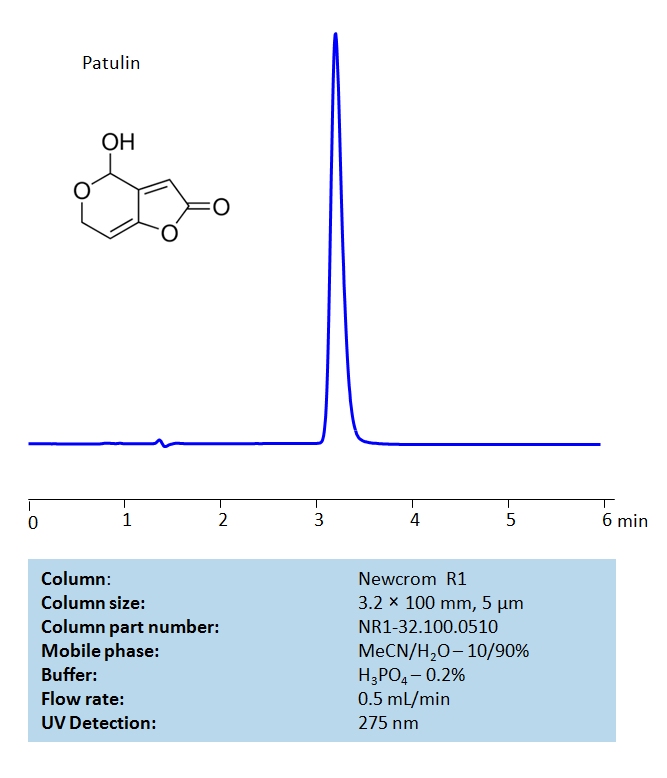HPLC Method for Patulin on Newcrom R1 by SIELC Technologies

High Performance Liquid Chromatography (HPLC) Method for Analysis of Patulin.
Patulin is a toxic chemical contaminant produced by several species of mold, especially within Byssochlamys Aspergillus and Penicillium. It is the most common mycotoxin found in apples and apple-derived products such as juice, cider, compotes and other food intended for young children.
Patulin can be retained in HPLC on Newcrom R1 reverse-phase column with the simple isocratic mobile phase consisting of acetonitrile (MeCN, ACN), water and Phosphoric Acid (H3PO4) buffer. The analysis method can be UV detected at 275 nm.
| Column | Newcrom R1, 3.2 x 100 mm, 5 µm, 100 A, dual ended |
| Mobile Phase | MeCN – 10% |
| Buffer | H3PO4 – 0.2% |
| Flow Rate | 0.5 ml/min |
| UV Detection | 275 nm |
| LOD | 0.002 ppm |
| Class of Compounds | Hydrophilic |
| Analyzing Compounds | Patulin |
Application Column
Newcrom R1
Column Diameter: 3.2 mm
Column Length: 100 mm
Particle Size: 5 µm
Pore Size: 100 A
Column options: dual ended





